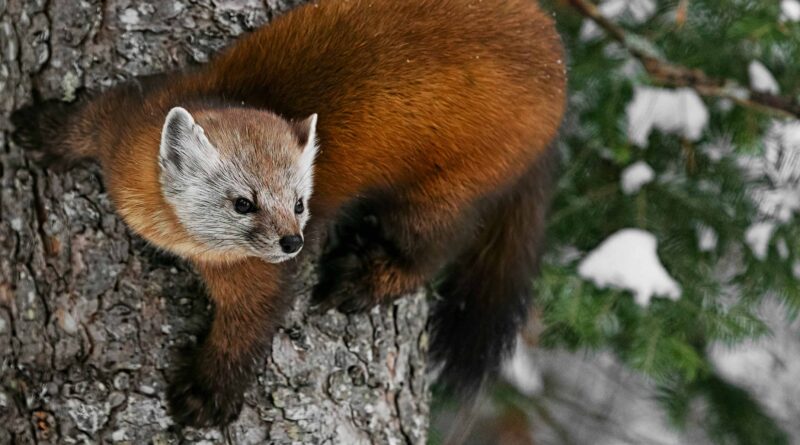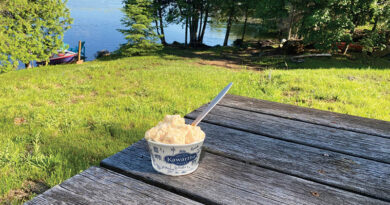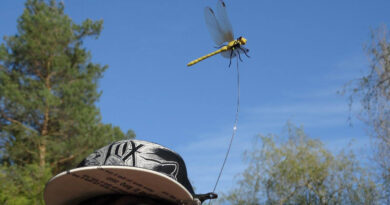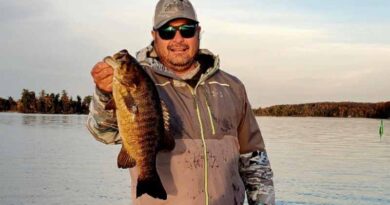Thumbs Up For Biodiversity
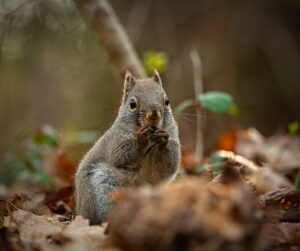 The question stemmed from a red squirrel scampering along the forest floor on a guided hike. People shared their experiences with squirrels, from chewed household wires to missing Christmas light bulbs. “Well… ahh…, what good are they anyways!?” was the question delivered haltingly and blurted out when more subtle words eluded the speaker.
The question stemmed from a red squirrel scampering along the forest floor on a guided hike. People shared their experiences with squirrels, from chewed household wires to missing Christmas light bulbs. “Well… ahh…, what good are they anyways!?” was the question delivered haltingly and blurted out when more subtle words eluded the speaker.
From the perspective of the pine marten, Cooper’s hawk or the red fox, the squirrel provides the necessary food for survival and reproduction. If conifers could talk, they would thank the squirrel for inadvertently planting their seeds while caching their cones, helping to propagate new saplings in the spring. Understanding the roles and connections between species helps us to appreciate their importance.
In the simplest terms, the loss of any species makes the ecosystem less stable: the more biodiverse the ecosystem is, the healthier it is making it more resilient to stressors like drought, disease, invasive pests and climate change. When species disappear, the system of checks and balances in the ecosystem begin to unravel.
Take a forest, for example, clear cut it and replant with a single species of tree. These trees will be easier to harvest, but if an infestation breaks out, there will be little defense against a devastating loss. With tree diversity, there will be species that are naturally more tolerant and they will survive, allowing the forest to keep a foothold and bounce back quicker.
For a wildlife example, wolves, a keystone species of Yellowstone National Park in the U.S., were systematically eliminated from the park in the 1930s, freeing the elk in the park from significant predatory pressure. Elk responded by staying in one area during the winter months and browsing heavily on willow, cottonwood and aspen. Predictably, elk numbers increased significantly. The fast growing, sun loving willow is a winter staple of beavers, so their numbers dropped to historical lows within the park.
The reintroduction of wolves started in 1995. Trucked in from Jasper National Park in Alberta, this reintroduction set a trophic cascade of environmental changes. Elk responded to roaming wolf packs by moving more to avoid winter predation thereby reducing the browsing pressure on willows and other open meadow plants. Bison and beaver populations increased with more food being available, beavers going from one colony in 1995 to nine colonies and growing in 2023. Carrion scavengers including beetles, magpies, wolverines, lynx, bears, raven and coyotes all have benefited from the more regular distribution of carrion with wolves back in the ecosystems. Yellowstone is now more biodiverse than it was 50 years ago.
Metaphorically, biodiversity could be looked at like the game of Jenga. Canadian artist Benjamin Von Wong sees it that way so he designed a set of stacked dioramas representing different ecosystems in his elaborate art installation at the United Nations Biodiversity Conference in Columbia in the fall of 2024. “All these blocks depend on each other for stability,” says Wong. Too many pieces out of the game and the tower collapses. But unlike the game, in biodiversity Jenga, we can keep blocks or put blocks back in with proper conservation efforts.
Every living organism whether it be a plant, fungi or animal occupy a niche, a role or function within the ecosystem they live. It includes the physical space an organism occupies, its habitat, its dietary preferences, its interactions with other organisms, and its role in nutrient cycling. With millions of years of evolution, these roles and functions are very specialized and relationships between species are far reaching and complex, often hidden and not fully understood.
So, the question remains, “what good are they anyways?” Like a spider’s web with more strands, an ecosystem with more interconnections is healthier, stronger and more resilient to environmental stressors. It is well understood that human health is directly linked to a health of the natural environments around us, an important fact that we need to remember whenever we interact with nature.
Submitted by Rick Whitteker. You can find Rick at home in the forest, as a seasoned trail guide, nature writer and passionate wildlife enthusiast in the Haliburton Highlands.

